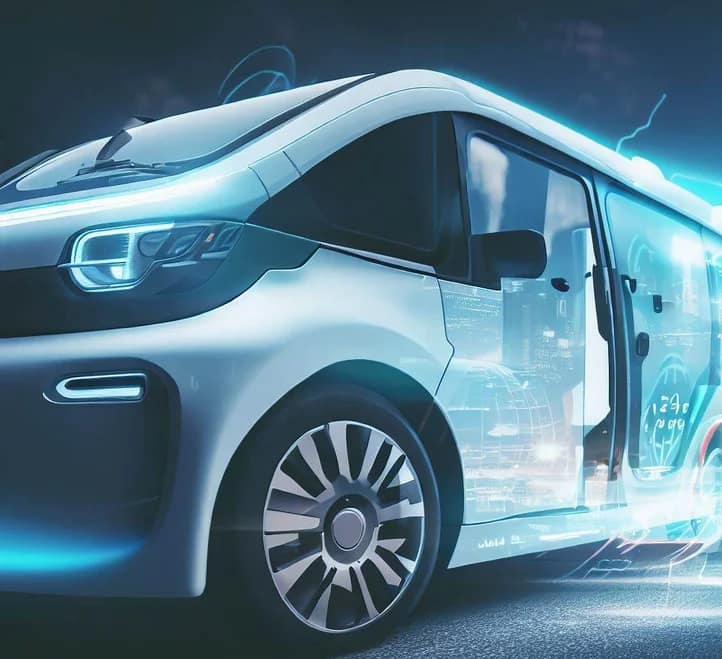Windshield wipers are a critical component ensuring visibility and safety in all vehicles, especially electric vehicles (EVs). As EV designs evolve, purpose-built wiper systems keep pace, clearing away rain, snow, and debris. This article explores the parts, operation, and maintenance of high-tech wipers for EVs.
How Do Electric Vehicle Wipers Work?
EV wipers function very similarly to traditional vehicle wipers using an electric motor and linkages:
- An electric motor provides rotational force to pivot the wiper arms back and forth across the windshield.
- Linkages transfer the motor’s motion to turn the wiper pivot shafts.
- The wiper arms mounted to the pivot shafts move the rubber blades across the glass.
- Adjusting wiper switch settings changes the power signal to the motor, altering wipe speed.
- Sensors detect moisture and automatically activate and adjust wiper speed accordingly.
Main Components of Electric Vehicle Wipers
EV wipers have several key components:

Wiper Motor
Converts electrical energy into mechanical energy to drive the wipers. Brushless motors improve reliability.
Linkage Assembly
Transfers motor power to pivot arms. Can include crankarms, gears, and connecting rods.
Pivot Shafts
Serve as axis allowing the wiper arms to swing back and forth.
Wiper Arms
Metal or plastic arms providing structure and force to drag blades.
Rubber Blades
The wiper blades actually contact and clear the windshield. Refills renew wipe quality.
Washer System
Sprays fluid to improve debris removal. Has electric pump, nozzles, tubing, and reservoir.
Benefits of Advanced Wipers for Electric Vehicles
Next-gen wiper systems deliver advantages tailored for EVs:
- Ultra-quiet operation from precision brushless motors avoids cabin disturbance.
- Durability for sustained high-speed operation demanded by EV performance.
- Enhanced sensors and algorithms for predictive moisture adaptation and driver personalization.
- Integrated heating elements accelerate de-icing in cold climates, draining less vehicle power.
- Aerodynamic wiper arms finely tuned for minimal wind noise and drag.
- Camera-based visual control replacing direct sightlines in autonomous EVs.
Inspecting and Maintaining EV Wipers
Follow these tips for maximizing electric vehicle wiper effectiveness:
- Visually inspect blades regularly for cracks, splits, and stiffness. Replace if degrade.
- Check that blades fully clear the windshield without streaks or missed spots.
- Listen for excessive motor noise indicating worn brushes or bearings.
- Confirm multi-speed settings toggle speeds and sensors trigger auto wiping.
- Clean blades and glass periodically with approved cleaners to prevent residue buildup.
- Replace wiper fluid as needed to prevent freezing and replenish cleaning additives.
- Consider installing winter rubber refills for superior ice and snow clearing.
Electric Vehicle Models with Advanced Wipers
- Tesla Model 3: Uses an enclosed aerodynamic wiper system for low noise and drag.
- Rivian R1T: Provides heated wipers to rapidly melt ice and snow accumulation.
- Nissan Leaf: Optimizes front wiper coverage area for best visibility.
- VW ID.4: Employs a rear wiper with integrated washer nozzle.
- Ford Mustang Mach-E: Offers a premium wiper refill kit for winter performance.
- Lucid Air: Features articulating wiper arms to precisely follow the windshield curve.
The Future of Electric Vehicle Wiper Technology
OEMs and suppliers continue innovating cleaner, smarter wiper systems:
Video Camera Vision Integration
Future autonomous EVs will rely on wiper clearance of cameras versus forward visibility.
Predictive AI Timing
Onboard computers utilize weather data to optimize wiper predictive activation.
Cabin Air Quality Sensors
Wipers may activate based on interior particulate levels to refresh air.
Electromagnetic Blades
Magnetic fields could oscillate wiper blades without mechanical linkages, reducing noise.
Instantaneous Heating
Ultra-thin graphene film heating elements speed de-icing without draining battery range.
Self-Cleaning Coatings
Nano-textured glass coatings enable passive hydrophobic, anti-stick, and antimicrobial properties.
In-Arm Fluid Storage
Fluid reservoirs within wiper arms omit long tubing runs vulnerable to leaks.
Conclusion
As electric vehicles strive to deliver refined and optimized experiences, purpose-built wiper systems erase distracting visibility impediments in all conditions. With smarter sensing and advanced materials, the humble windshield wiper takes on expanded importance ensuring passenger confidence and safety regardless of weather.
Text.
Text.
Text.
Text.
